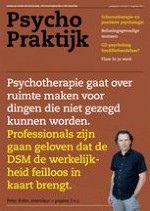01-08-2014 | Psychodiagnostiek
DSM-5 en psychische problemen bij kinderen
Gepubliceerd in: Psychopraktijk | Uitgave 4/2014
Log in om toegang te krijgenAbstract
Eén van de ambities van de DSM-5 was om het ontwikkelingsperspectief van psychische stoornissen, van de baarmoeder tot de dood, beter tot uiting te laten komen in het handboek. In deze bijdrage bespreken we op welke wijze deze ambitie is aangepakt en welke consequenties dit heeft gehad voor de DSM-5. Specifiek gaan we in op de concrete veranderingen van DSM-IV naar DSM-5 wat betreft het classificeren van psychische problemen van kinderen en jeugdigen, en hun gezin.
